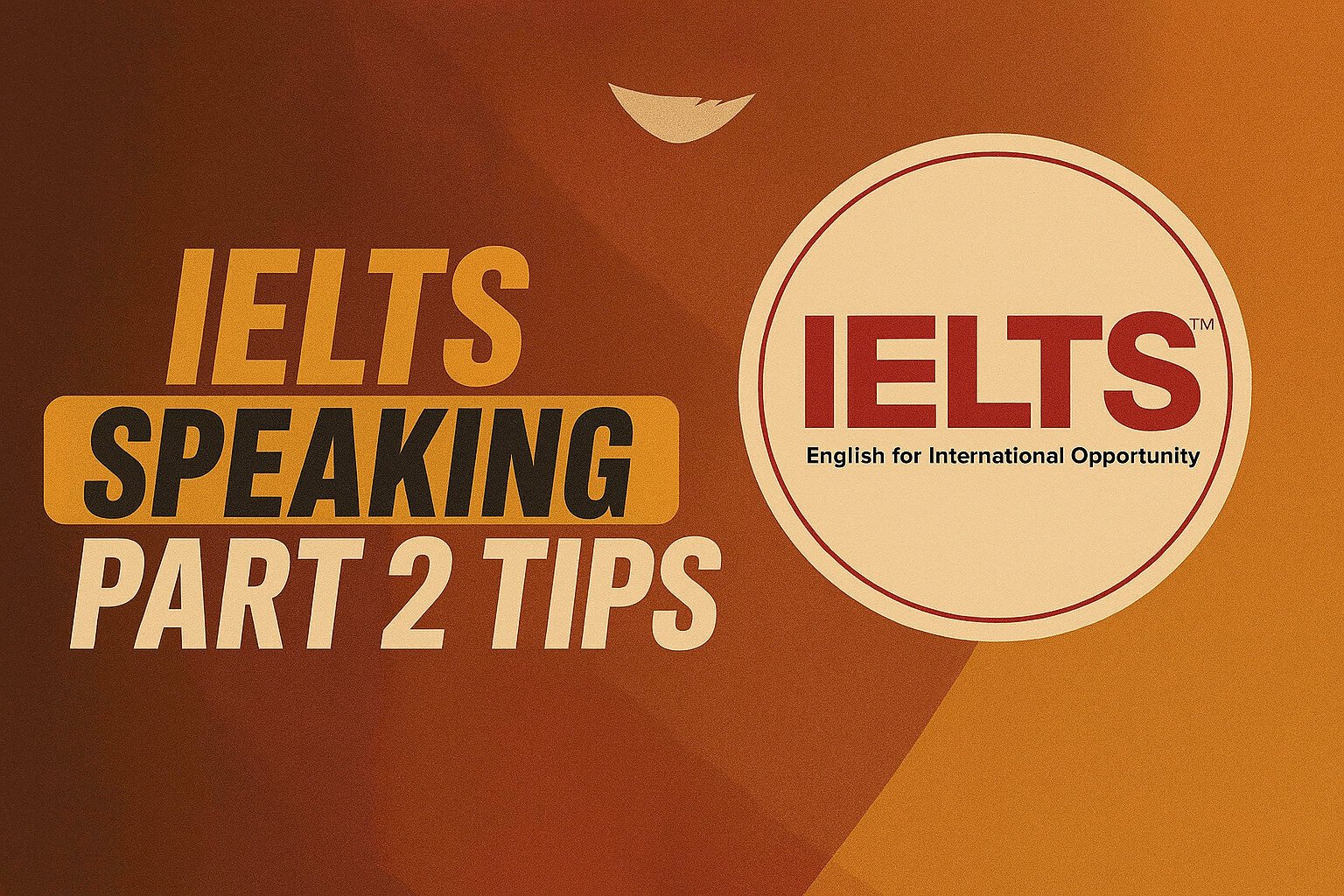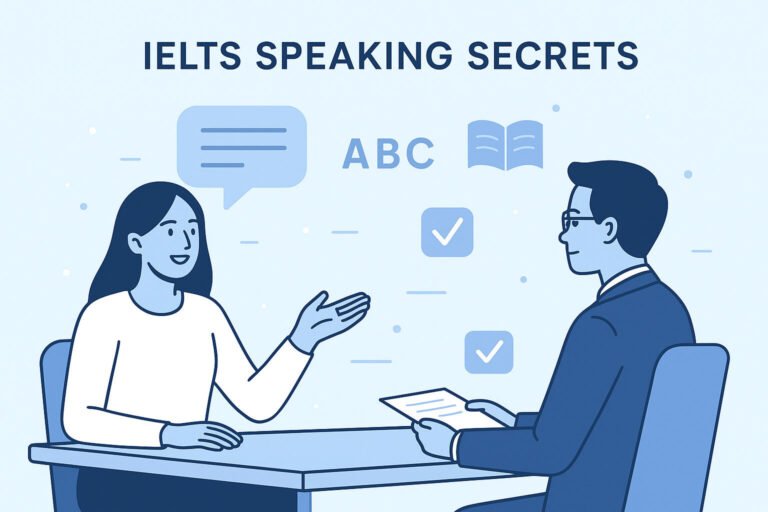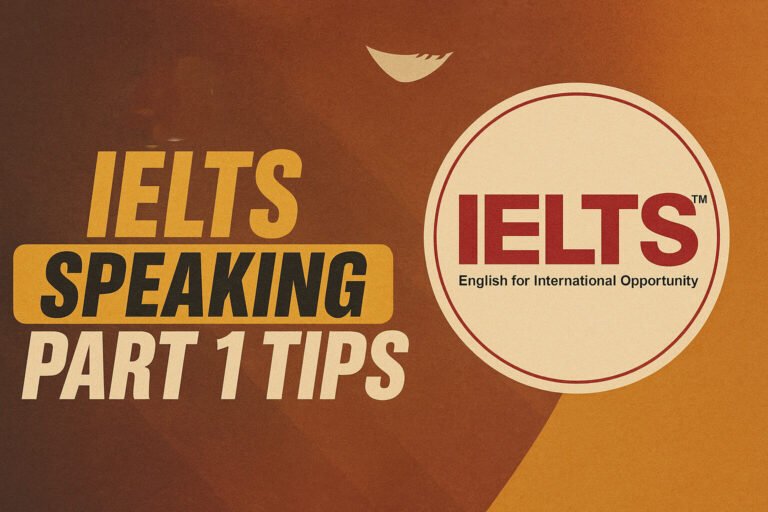If the thought of speaking for two minutes without pause makes your heart race, you’re in good company. Many IELTS aspirants find Part 2 of the Speaking test the most intimidating. But here’s the good news: with the right strategy and preparation, you can turn this challenge into your strongest performance.
Struggling with the Cue Card?
In this guide, you’ll learn proven IELTS Speaking Part 2 tips, how to use your one-minute prep time effectively, and how to confidently describe the topic for the full two minutes. Whether you’re aiming for a Band 7 or higher, this article will help you get there.
What Is IELTS Speaking Part 2 Tips?
IELTS Speaking Part 2 is also known as the “Long Turn.” You’ll receive a cue card with a topic and a few prompts. You’ll have:
- 1 minute to prepare and take notes
- 2 minutes to speak continuously on the topic
- Follow-up questions from the examiner after your speech
This section tests your ability to organize thoughts, speak fluently, and use a range of vocabulary and grammar.
How to Use Your 1 Minute Wisely
Your one-minute preparation time is crucial. Here’s how to make the most of it:
Notes for 1 Minute: What to Write
Use bullet points to jot down ideas for each prompt on the cue card. For example:
Cue Card Topic: Describe a book you recently read
- What it is: Atomic Habits
- When you read it: Last month during vacation
- What it is about: Building good habits
- Why you liked it: Practical advice, easy to follow
IELTS Speaking Part 2 Cue Card
Quick Prep Strategy
- Think of a real or imaginary example
- Use the prompts as a guide, but feel free to add extra details
- Plan a beginning, middle, and end to your story
Describing the Topic for the 2 Minutes
Here’s how to structure your response to keep it smooth and engaging:
Start Strong
Begin with a sentence that introduces the topic clearly:
Today, I’d like to talk about a book I recently read called Atomic Habits.
Follow the Prompts
Address each bullet point naturally. Don’t just list answers—connect them with transitions:
- I read it last month while I was on vacation in Cox’s Bazar.
- The book is about how small changes can lead to big results.
Add Personal Touches
Include feelings, opinions, and anecdotes:
- One idea that really stuck with me was the concept of habit stacking.
- I’ve started applying some of the techniques, and they’ve helped me stay more productive.
Wrap It Up
End with a brief summary or reflection:
Overall, I found the book incredibly useful, and I’d recommend it to anyone looking to improve their daily routine.
Sample Cue Card Response Structure
| Section | What to Include | Example Phrase |
|---|---|---|
| Introduction | Topic + brief overview | “I’d like to talk about…” |
| Main Body | Details for each prompt + extra info | “It happened when…” / “It’s about…” |
| Personal Insight | Feelings, opinions, impact | “I felt…” / “It taught me…” |
| Conclusion | Summary or recommendation | “In conclusion…” / “I’d recommend…” |
IELTS Speaking Part 2 Tips to Boost Your Score
Here are some expert strategies to help you shine:
- Practice with a timer – Simulate the test conditions regularly.
- Record yourself – Listen for fluency, grammar, and pronunciation.
- Use linking words – Such as “firstly,” “however,” “for example,” “finally.”
- Avoid memorized answers – Examiners can tell if you’re reciting.
- Expand your vocabulary – Use synonyms and descriptive phrases.
- Stay calm and confident – It’s okay to pause briefly to think.
Follow-Up Questions: What to Expect
After your 2-minute talk, the examiner may ask 1–2 related questions. These are designed to explore your ideas further.
Examples:
- Do you often read books like this?
- How do you think reading habits have changed in recent years?
Tips:
- Keep your answers short but thoughtful
- Use this chance to show more vocabulary and ideas
- Stay on topic and avoid going off on tangents
IELTS Speaking Part 2
Q1: Can I make up a story if I don’t have a real example?
Yes! The IELTS test doesn’t check for factual accuracy. Just make sure your story is coherent and relevant.
Q2: What if I finish speaking before 2 minutes?
Try to expand your ideas. Add more details, examples, or personal thoughts. The examiner will stop you when time’s up.
Q3: Is it okay to pause during my speech?
Short pauses are natural. Just avoid long silences. Use fillers like “Let me think…” if needed.
Q4: Will I lose marks for grammar mistakes?
Minor mistakes are okay if your meaning is clear. Focus on fluency and communication.
Q5: How can I improve my fluency?
Practice speaking daily, record yourself, and use apps or speaking partners to simulate real conversations.
Your Cue Card Confidence Starts Here
IELTS Speaking Part 2 doesn’t have to be a source of stress. With smart preparation, effective note-taking, and confident delivery, you can impress the examiner and boost your score. Remember to practice regularly, stay relaxed, and treat the cue card as a chance to share your story.








